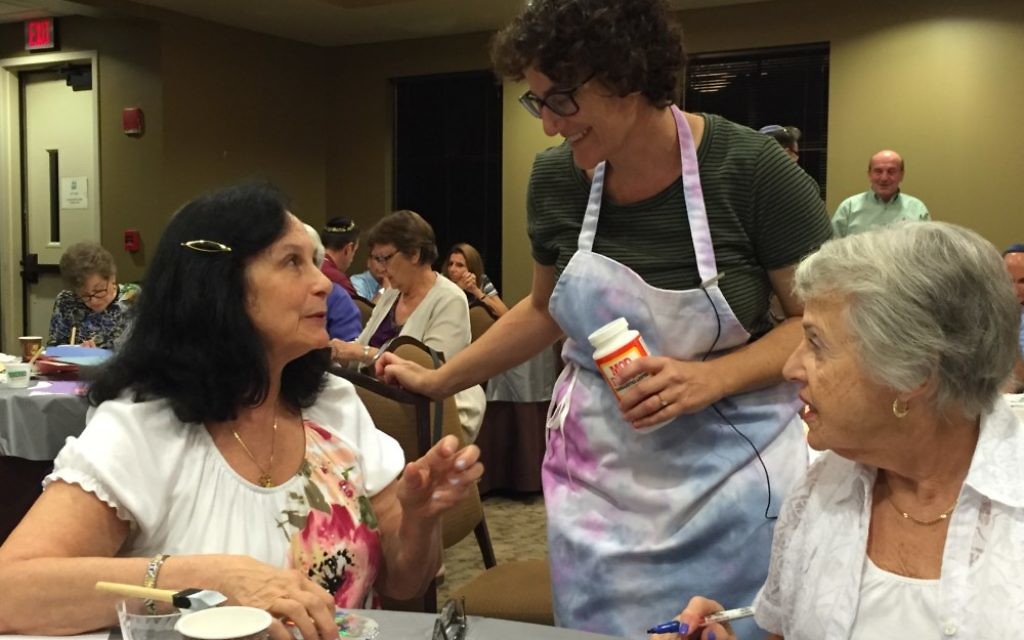Who Am I: Exploring the Self
A small paper plate with a compact disc sitting in it, colored markers, and a sheet of paper with excerpts by British author Lewis Carroll and 13th century Persian poet Rumi.
These were items visitors found on their tables at “Through the Looking Glass: The World Reflected in Ourselves,” an event to help prepare for the High Holidays on Sunday night, Sept. 25, at Congregation Gesher L’Torah.
Sue Chase, the director of the Neshama Interfaith Center, which co-sponsored the event, called it “a chance to release our inner artist while recharging our internal batteries.”
Get The AJT Newsletter by email and never miss our top stories Free Sign Up
Hosted by Rabbis Michael Bernstein and Pamela Gottfried, the evening was an exploration of the self, using analogies by the authors and the chance to create a symbolic piece of art.
“We came up with this idea together because we wanted to think about this one aspect of the concept of reflection on ourselves and to take it literally, as we’ll see in the art project, as well as to explore the texts,” Rabbi Bernstein said. “The purpose is to bring your own perspective to the conversation regardless of your faith, or your belief, or your doubt.”
Rabbi Bernstein challenged attendees to answer the question “Who am I?” with just one word. He then focused on a brief portion of Carroll’s 1871 book “Alice Through the Looking Glass,” featuring a heated discussion between her and the Caterpillar.
Alice is being asked exactly who she is by a rather demanding Caterpillar, and her confused response fails to appease him.
“It’s a very powerful resonating concept, I Imagine, in many faiths — how we see, what prevents us from seeing everything — and reminds us that what we see isn’t always what we think we see,” Rabbi Bernstein said. “Lewis Carroll’s very famous story is not a religious text per se but is a very powerful text that overlaps with our religious consciousness.”
The looking glass, or mirror, is a somewhat ambiguous concept, the rabbi said. “A looking glass makes you remember it’s just glass that reflects what’s on the other side of it, something completely opaque where light doesn’t go through. You see yourself.”
At least two faith traditions use phrases about looking through a glass, he said, the more famous one being in the Christian testament, in which you see the world through a glass darkly. “It’s the way in which the world is an illusion to a certain extent, that it doesn’t quite give you the whole picture. Also, in the rabbinic tradition there’s a description that all the prophets saw a vision of the world to come in a glass that didn’t fill with light, but you could see a little bit through it.”
Turning to a short poem by Rumi that contains the lines “Look inside yourself/everything that you want/you are already that,” Rabbi Bernstein said: “This poem uses the language of the looking glass. Rumi is trying to tell us that our soul is capable of being anything and everything. You are capable of anything. You are enough. It is a way of saying you are not someone who needs to be more than you are or you perceive you are.”
This is a perfect time for reflection, he said. “The text itself is a way of reflecting something about ourselves. This is part of a journey leading up to the High Holidays, a real opportunity for each individual to think about themselves, their relationship with G-d and who they are.”






comments